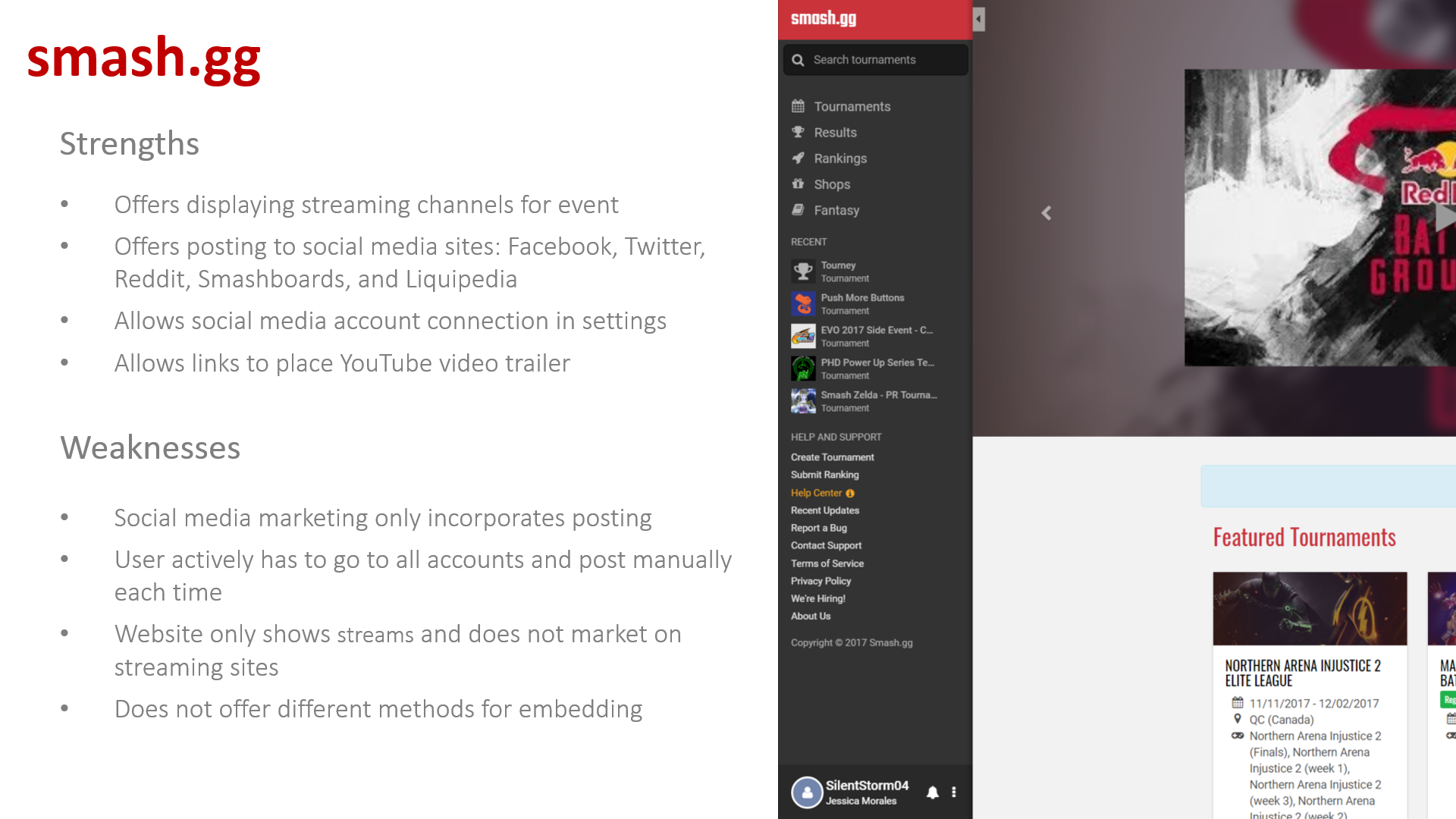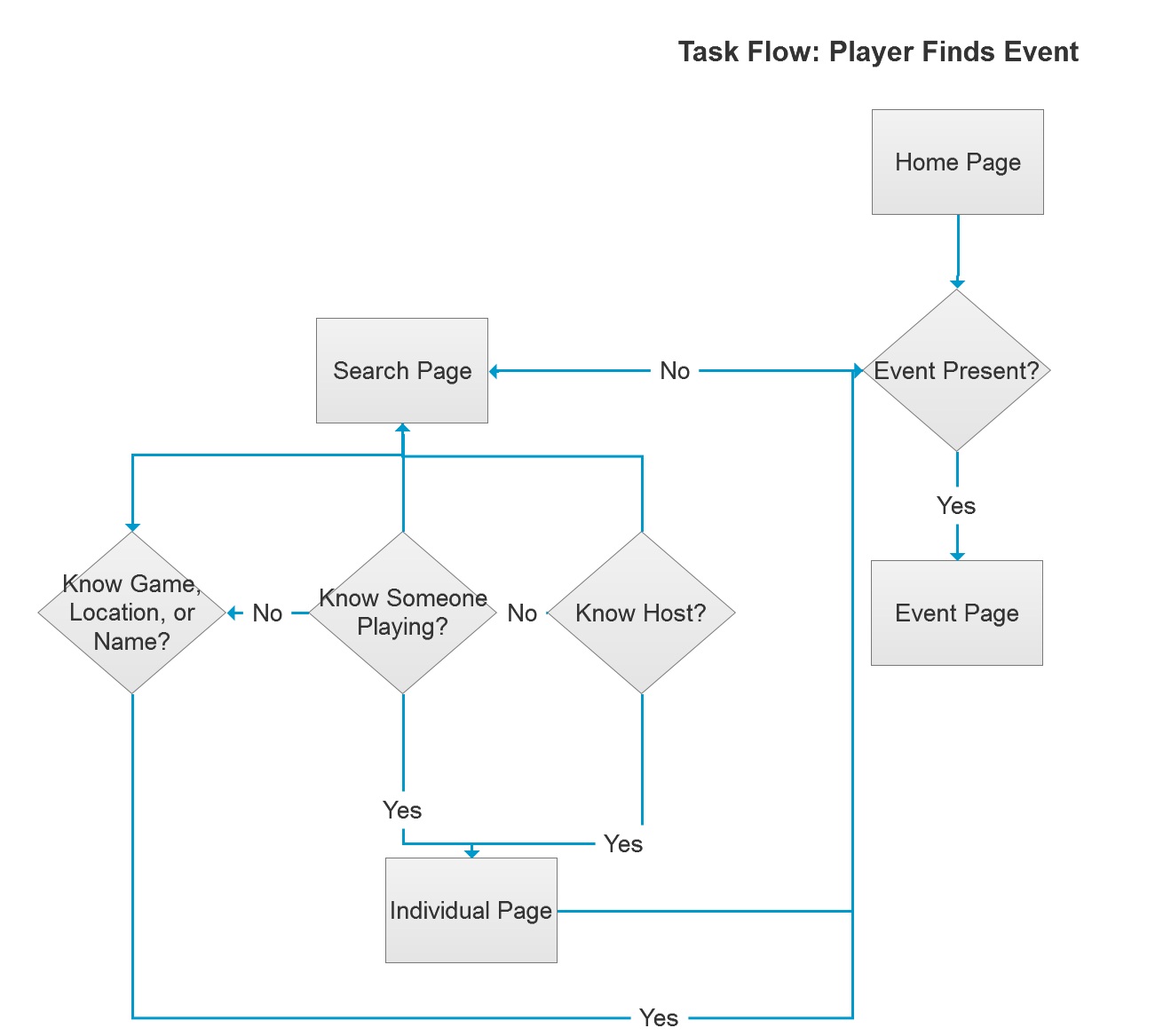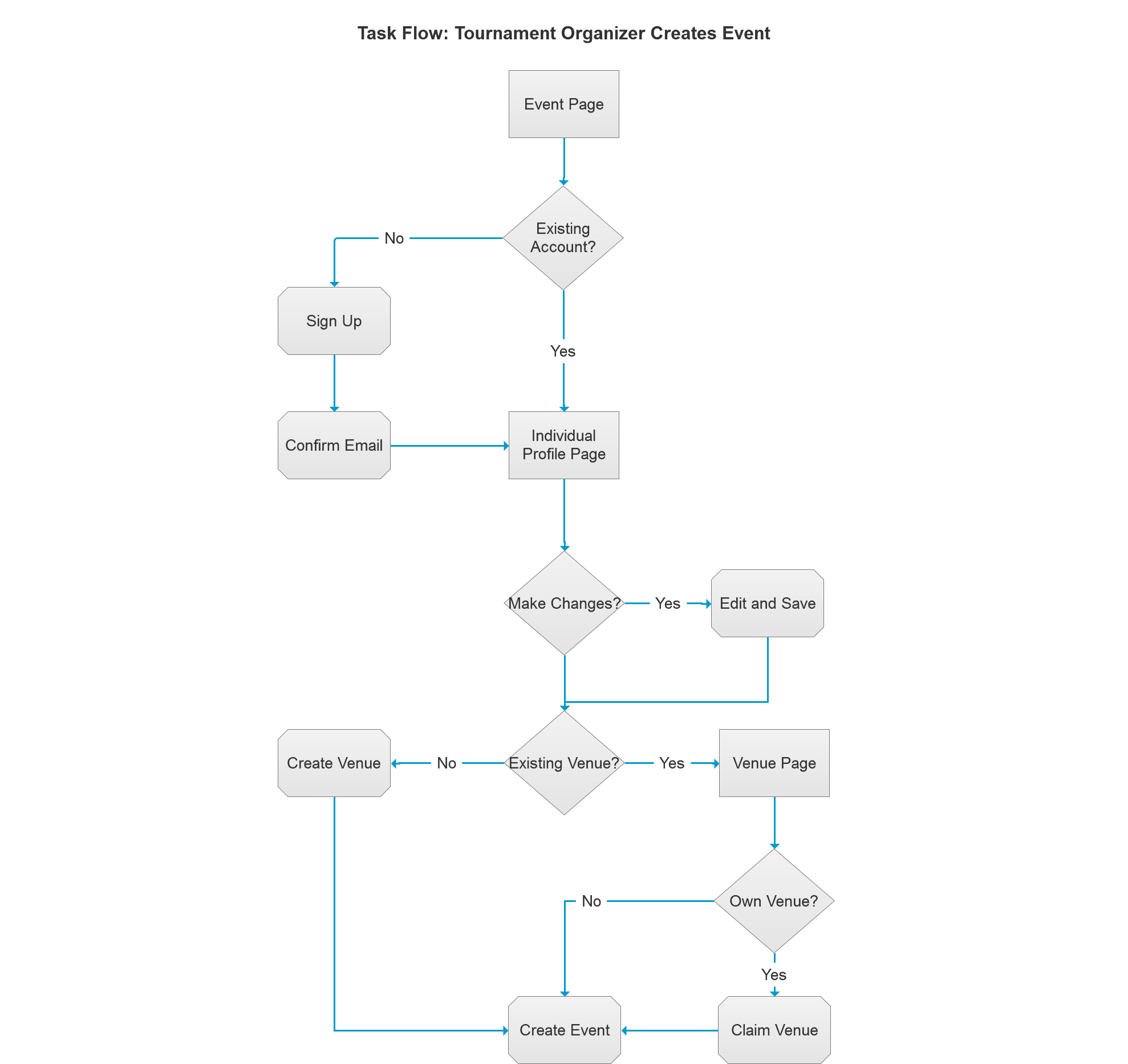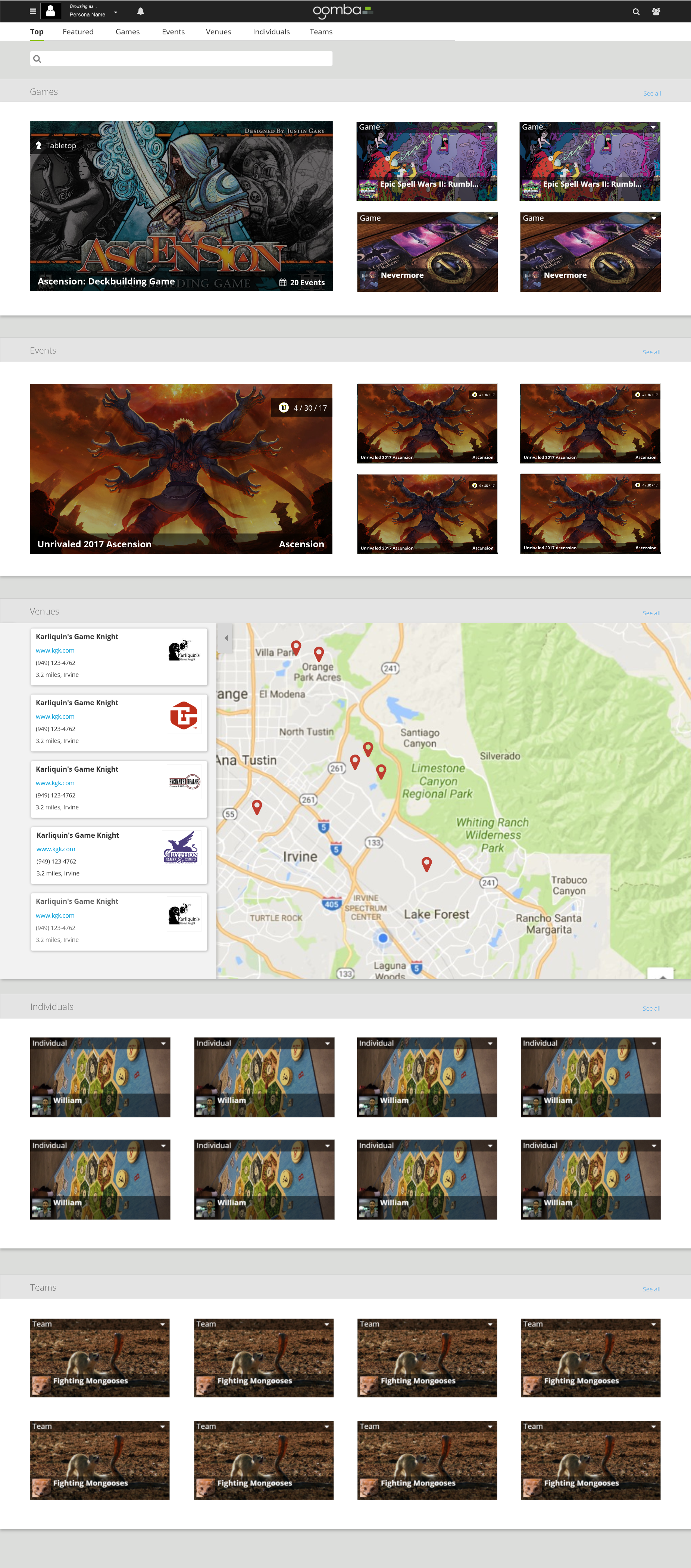Introduction
In the gaming community, it is difficult to find and attend nearby eSports and tabletop events. A lot of events are poorly marketed and discovered by word of mouth. Based on findings from user research and competitive analysis, I designed a website and mobile application that addressed key problems related to running and attending events.
Oomba, Inc.
Oomba was a software startup company whose main goal was to make it easier to run and attend eSports and tabletop events. In 2017, Oomba launched a national tournament series, known as Unrivaled. The current software was frustrating and confusing to use, and therefore Oomba needed to fix usability issues before their new tournament series began.
Prototype for Website Redesign: Venues
Defining the Problem
The first task was to analyze the website and business. Through a heuristic evaluation, usability tests, and previous tournament data, there was sufficient evidence indicating that the website was not functioning optimally.
Results from research: Tournament organizers failed to create events that players could register for. Failure to create events caused an increase in customer service tickets.
People Involved With Running and Attending Events
There are four types of people involved with running and attending eSports and tabletop events. Dividing the users into tournament organizers and players, allowed the team to pinpoint some key missing pieces that was causing issues with creating and finding events.
Key findings: Tournament organizers lacked information to create their own events, and players did not have confidence in the system to register for last-minute events.
Tournament Organizers and Players
Competitive Analysis
There were several competing companies that were operating under the eSports tournament space. However, there were little to no competitors for tabletop tournaments. The business wanted to support eSports tournaments but ultimately the primary focus shifted toward tabletop.
Competitors
Breaking Down Hosting and Attending Events
Due to the fact that the website was missing a simple way to create and find events, it was important to redesign how both of those flows would work within the system. This was a key step in redesigning the venue and search functionality that the tournament organizers and players needed.
Taskflows
Testing Different Concepts for Search
It was apparent that the search functionality in the website needed a redesign. After mind mapping, white-boarding sessions, and rough sketches, the team worked on several different designs and iterated based on user feedback.
Results from user feedback: The initial concept of a header banner was unnecessary. Users wanted to be able to filter their search results, but did not want filters in the TOP section. Finding events by venues was easier using a map, and people sorted results by popularity and registration numbers before name.
Wireframes
Optimizing Search
Through research, it was apparent that casual players were not actively seeking events to attend to. Casual players visited their favorite stores, went to events friends attended, and used gaming as a means of socializing. Therefore it was crucial to simplify the search for venues nearby. By adding a map and suggesting places using geolocation, players had an easier time finding venues and even searched for other venues nearby as a means to attend other events and expand their social network.
Tournament organizers were more likely to search for events to determine if a type of event run in the past was successful. Search was used as a tool for research. TOs cared more for attendee rates, recurring events, competitors nearby, and popular games. Adding filters, allowing sorting by popularity, optimizing searching queries, and creating Top, Venues, Events, and Games sections greatly increased the usage of search.
Mockups for Search
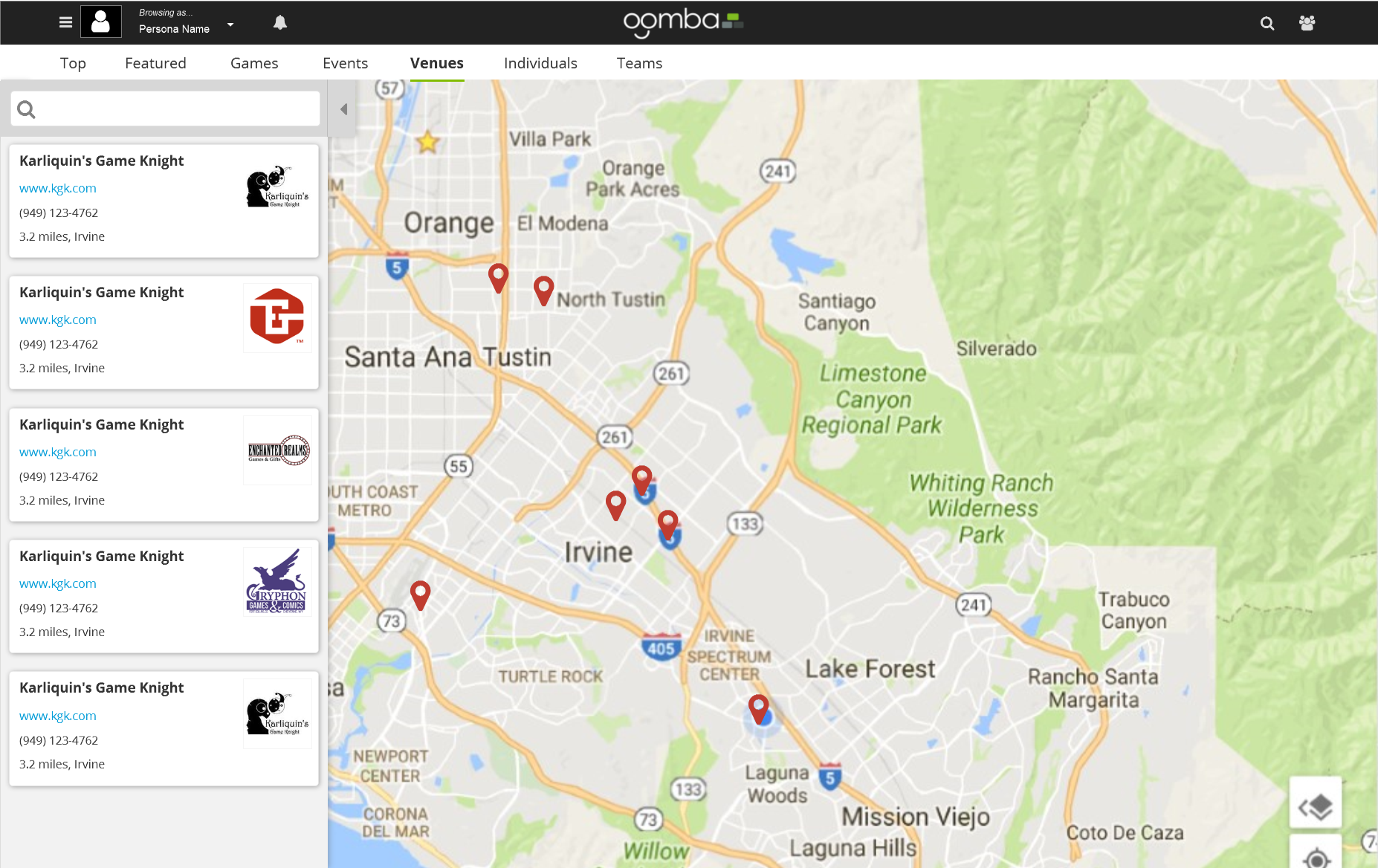
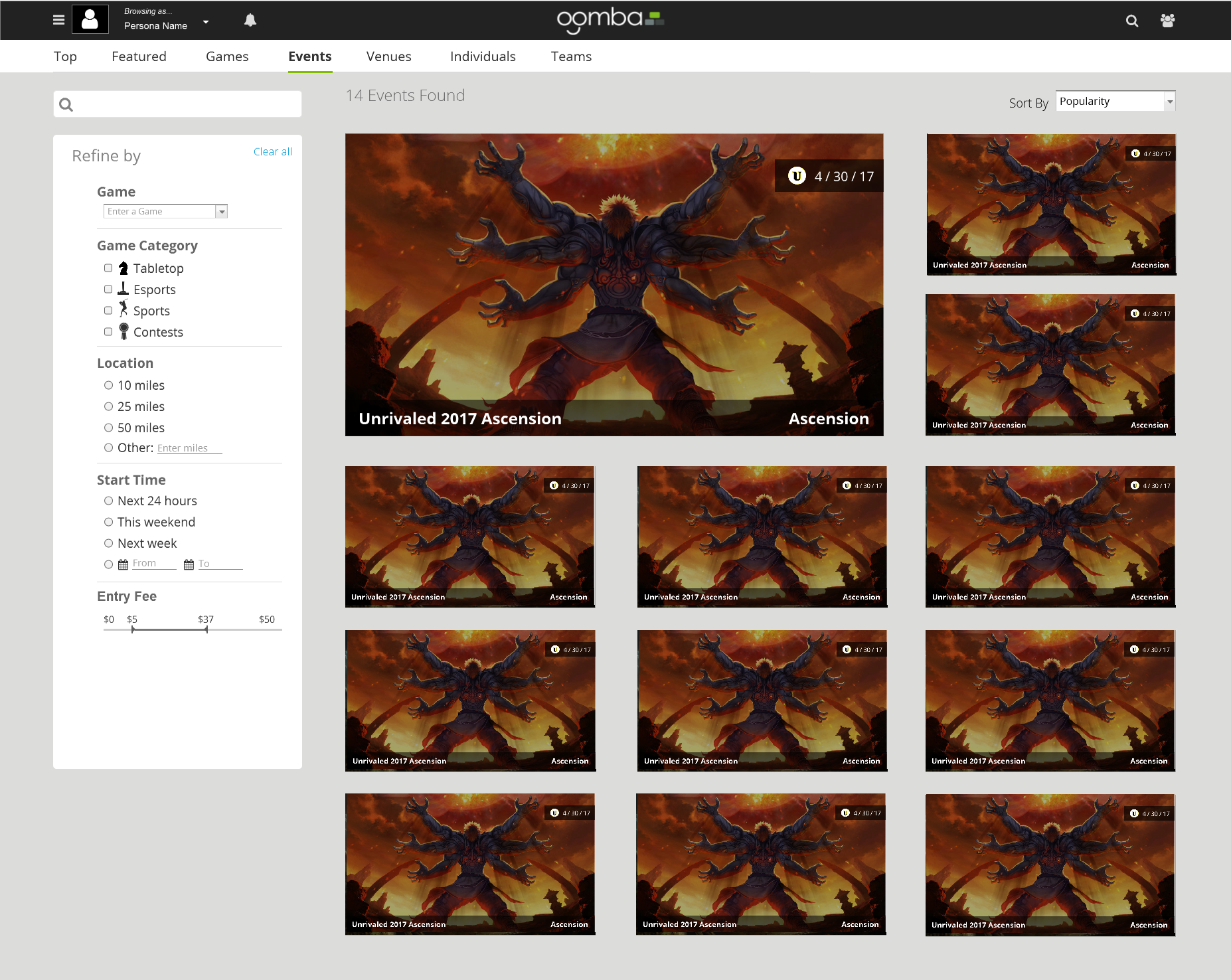
A Place to Host Events
After journey maps, task flows, and wireframes were created. Prototypes were created using Axure and tested against.
Creating a fresh look where users can quickly view a venue's upcoming events, location, hours of operation, and gallery was the next step. Players and tournament organizers made decisions on attending or hosting events based on how the venue looked, the logistics of running an event, and previous attendee numbers.
Social media features for sharing was added and the entire workflow for creating and marketing events was reworked to include oAuth using Facebook and Google APIs.
Final Mockup Shown in Prototypes for Venues
Registering for Events
In an age of mobile technology, where a majority of players view information on their phones and tend to register for events impulsively, the website needed to be responsive and show the minimum amount of information while increasing emphasis on the most important call to action, Register. Since the majority of players attend gaming events for social reasons, it was important to make it easy to see participants and search for friends.
Final Mockups Shown In Prototypes for Registering
The Results
Through research and using a rapid redesign process where the team identified problems, pitched solutions, built prototypes, and ran user testing sessions, I was able to design the website.
As a result, the amount of customer service tickets decreased drastically. Over 400 venues were able to create events for their tournaments and conversion rates of account creation increased as well.








